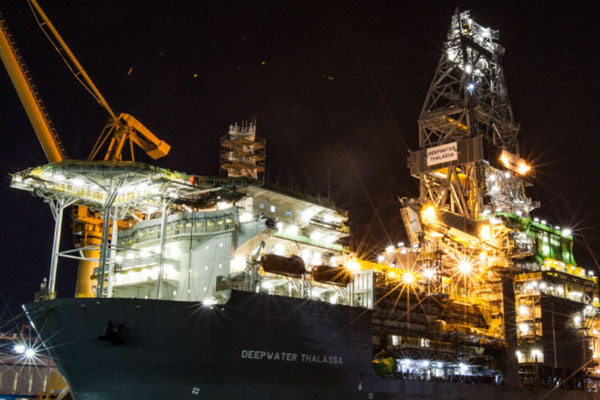Contents

Introduction
Transocean is one of the largest offshore drilling contractors worldwide that provides rigs and services for offshore oil and gas exploration and production. The company owns and operates one of the most versatile and technically advanced drilling fleets used for offshore hydrocarbons as well as renewable energy projects. Headquartered in Switzerland, Transocean has major operations across leading offshore regions globally. This article provides an overview of Transocean, its history, fleet, services, financial performance and outlook.
History
Transocean traces its roots back to the Pacific Coast Oil Company, an early offshore drilling contractor founded in California in 1922. After various mergers and acquisitions, it was acquired by Sonat Offshore Drilling in 1993 and renamed Transocean Offshore.
In 1996, Transocean Offshore merged with Sedco Forex, combining second and third largest offshore drillers at that time. The new company renamed itself Transocean Sedco Forex. Through additional deals, the company continued to expand its drilling capabilities and geographic presence.
In 1999, Transocean Sedco Forex acquired R&B Falcon Corporation for $17 billion, then the largest acquisition in the offshore drilling space. The combination created the world’s largest offshore rig contractor. The company simplified its name and branding to just Transocean in 2000.
Over the decades, Transocean has led the industry in terms of ultra-deepwater and harsh environment drilling through newbuild rigs and large acquisitions. It has been involved in many record offshore projects globally.
Fleet and Services
Transocean owns and operates a versatile fleet of 37 mobile offshore drilling units including drillships and semisubmersibles. The fleet includes some of the most capable rigs for ultra-deepwater and high-specification projects:
- 8 ultra-deepwater drillships capable of drilling in over 12,000 feet water depth
- 6 harsh environment semisubmersibles for North Sea and Canada
- 5 high-specification jackups for shallow water projects
- 2 moored semisubmersible drilling rigs
The company also has several rigs under construction as it continuously renews its fleet.
Transocean employs these state-of-the-art drilling rigs across oil and gas projects worldwide through competitive contracts. It provides complete offshore drilling services including:
- Well construction, drilling and completion operations
- Advanced engineering services
- Drilling process design, oversight and automation
- Integrated services with downhole tools, mudlogging etc.
- Project management and operating personnel
- Logistics, maintenance, upgrades and bespoke rig modifications
Financial Performance
Transocean generated annual revenues exceeding $12 billion between 2010 to 2014 at the peak of offshore drilling activity. Revenues dropped after the oil downturn but have recently improved from $7.4 billion in 2017 to $9.1 billion in 2021.
However, the company has reported net losses each year from 2015 to 2021 due to industry headwinds, charges and impairments. The losses narrowed from $3.5 billion in 2020 to $592 million in 2021 as utilization and dayrates increased. Transocean continues to focus on improving revenue efficiency and optimizing costs.
Its contract backlog currently stands at $7.3 billion, providing near term revenue visibility. Transocean maintains a strong balance sheet with over $1.3 billion in liquidity. The company believes offshore activity is recovering from historic lows.
Future Outlook
Transocean sees greater deepwater activity ahead as outlook improves on higher oil prices, low inventories and supply challenges. Demand for its high-specification rigs is increasing with major offshore projects upcoming. Transocean also added $55 million of renewables-related backlog in 2021.
Key drivers for the company include ultra-deepwater projects in Guyana, Brazil and the Gulf of Mexico where its advanced drillships provide a competitive edge. Transocean also sees growth from Norway, East Canada and West Africa.
Transocean continues investing in a high-quality fleet, technologies like automation & hybrid power, and integrated services to deliver performance, efficiency and value. Its strong backlog, leading position and clean balance sheet make Transocean well placed to benefit from the industry upcycle.
Conclusion
As the largest offshore driller with state-of-the-art rigs and global experience, Transocean is uniquely positioned to capitalize on the improving offshore market. While risks remain around oil prices and cost inflation, the long-term industry fundamentals appear positive. Transocean’s world-class fleet, execution capabilities, financial flexibility and focus on high-return projects make the company ready to drive value creation.
